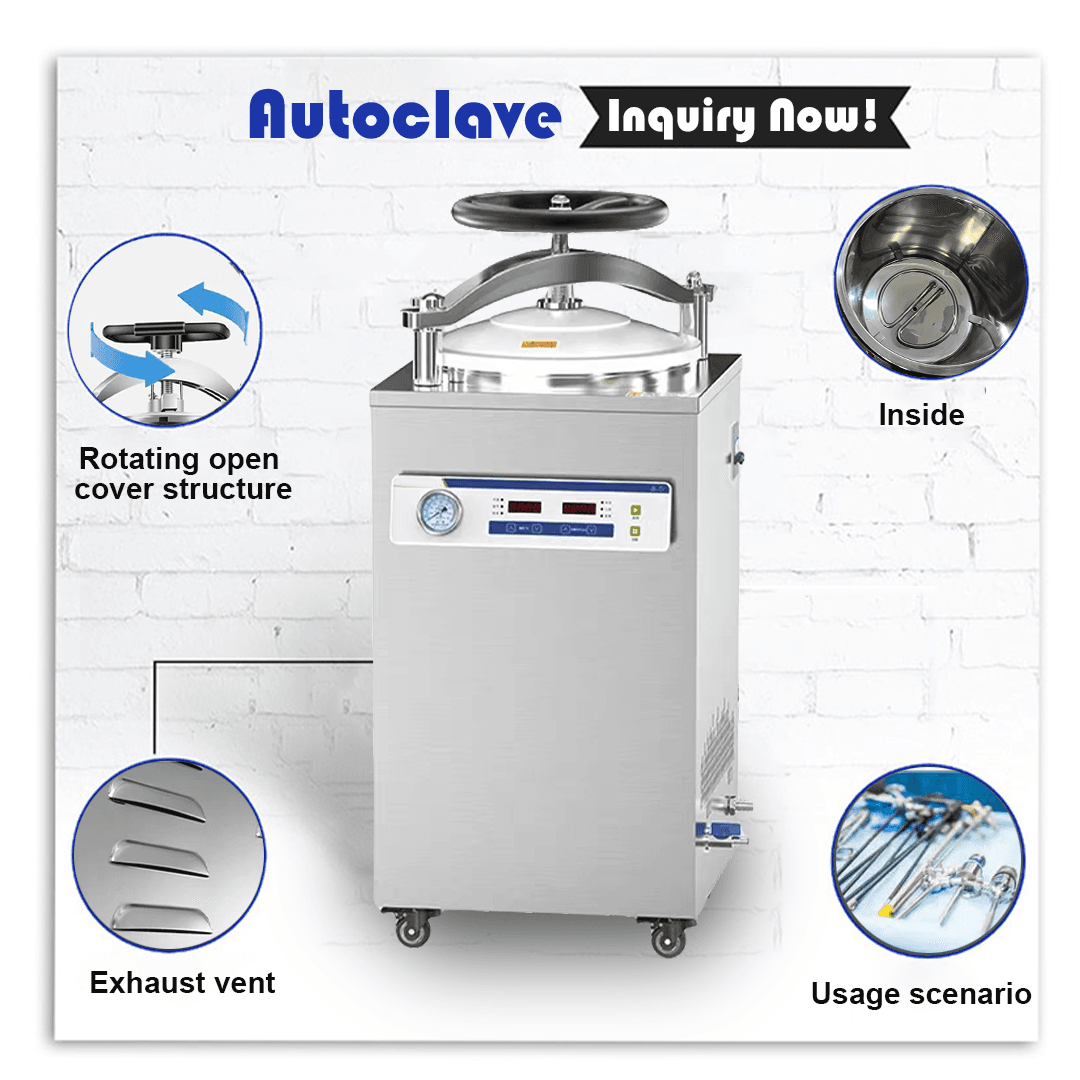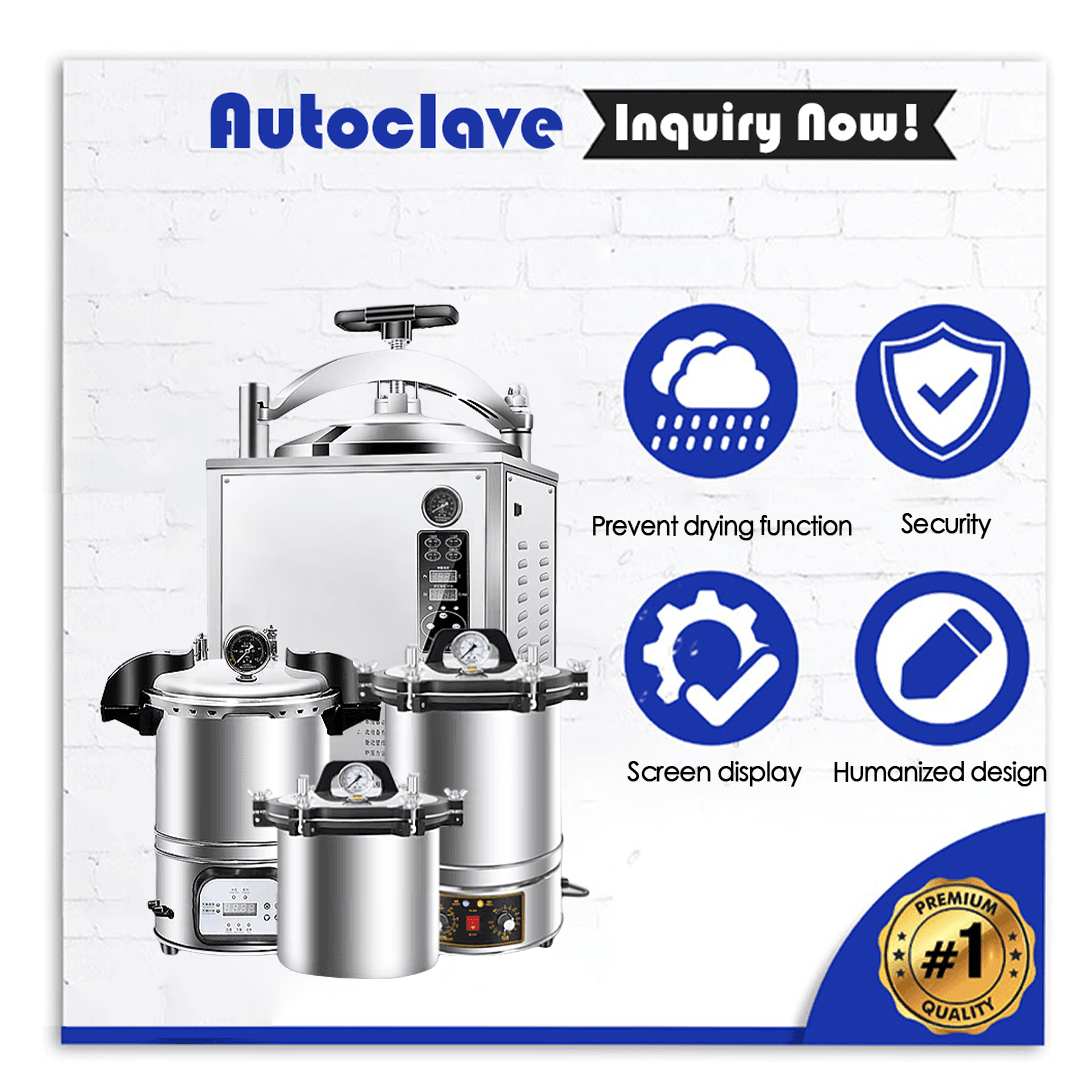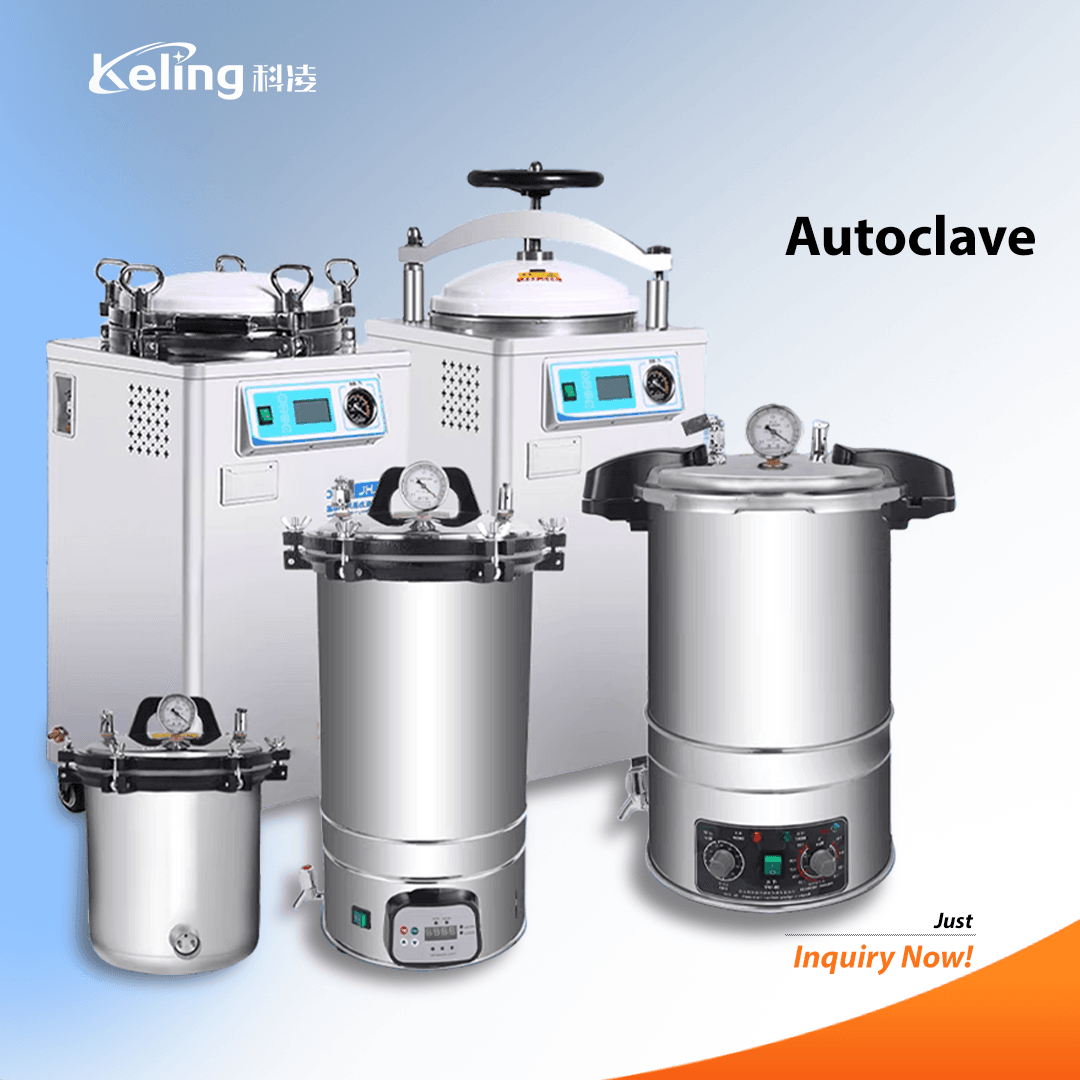
These two autoclave types show substantial differences in their design and capacity which influence their applications so understanding these distinctions is essential before purchasing. The guide offers comprehensive analysis of horizontal and vertical autoclaves including their applications, benefits and drawbacks and pricing variations to assist you in selecting the best sterilization solution.
Vertical autoclaves feature an upright configuration which makes them perfect for environments with restricted floor space.
The cylindrical chamber of the autoclave features a top-opening design.
The vertical design of these autoclaves enables them to operate in confined spaces which makes them appropriate for use in laboratories and clinics.
These autoclaves have a typical volume range of 25 to 100 liters.
The autoclave can function in three modes including manual operation as well as semi-automatic and fully automatic alternatives.
Horizontal autoclaves provide high-volume sterilization capacity through their larger design.
The autoclave chamber features a cylindrical or rectangular shape which opens laterally.
The size of horizontal autoclaves demands more space which makes them appropriate for both hospitals and industrial settings.
Capacity: Larger chambers, often exceeding 100 liters.
The operation mode is typically fully automatic and includes advanced functions to manage bulk sterilization processes.
Vertical autoclaves are ideal for:
Vertical autoclaves work well for clinics and labs that require minimal sterilization capacity.
Facilities that need to make efficient use of limited space should use compactly designed autoclaves.
Sterilizing smaller instruments and materials.
Horizontal autoclaves are better suited for:
Medical facilities pharmaceutical companies and research institutions requiring substantial sterilization capabilities rely on horizontal autoclaves.
Horizontal autoclaves enable the efficient sterilization of large instruments along with surgical tools and industrial materials.
Environments where speed and efficiency are critical.
The lower price of vertical autoclaves stems from their reduced size and simpler structure.
Entry-Level Models: $500–$1,500
Mid-Range Models: $1,500–$5,000
High-End Models: $5,000 and above
The increased cost of horizontal autoclaves stems from their higher capacity and more sophisticated features along with a durable construction.
Entry-Level Models: $3,000–$8,000
Mid-Range Models: $8,000–$20,000
High-End Models: $20,000 and above
Compact and space-saving design.
Affordable for smaller facilities.
Easy to install and operate.
Limited capacity, unsuitable for bulk sterilization.
Var trūkt uzlabotu automatizācijas funkciju.
Large capacity for bulk sterilization.
Advanced features for efficient and automated operation.
Suitable for high-demand environments.
Higher initial cost.
Requires more space for installation.
Choosing between a horizontal and vertical autoclave depends on your sterilization needs, available space, and budget. Vertical autoclaves are ideal for smaller facilities with limited space and sterilization demands, while horizontal autoclaves are better suited for large-scale operations requiring high capacity and advanced features.
For more insights into autoclave technology, check out our related articles:
The primary difference lies in their design and capacity. Vertical autoclaves are compact and open from the top, while horizontal autoclaves are larger and open from the side.
Vertical autoclaves are generally more affordable due to their smaller size and simpler design.
Yes, horizontal autoclaves can handle small tasks, but they are more cost-effective for bulk sterilization due to their larger capacity.
Vertical autoclaves are suitable for smaller hospital departments, but larger departments often require horizontal autoclaves for bulk sterilization.
Consider your sterilization volume, available space, and budget. Vertical autoclaves are best for compact spaces and smaller loads, while horizontal autoclaves are ideal for large-scale operations.
For inquiries or assistance in choosing the right autoclave for your needs, contact us:
E-pasts: inquiry@shkeling.com
WhatsApp: +8618221822482
Tīmekļa vietne: https://autoclaveequipment.com/
Let us help you find the perfect sterilization solution for your facility!

Autoklāvs kalpo kā būtiska ierīce medicīnas iestādēs, jo nodrošina instrumentu drošību un sterilitāti. Medicīniskā aprīkojuma tirgotājiem, izplatītājiem un iepirkumu speciālistiem ir jāizprot autoklāvu uzturēšanas prasības, lai uzturētu

Veselības aprūpes nozare pieprasa, lai sterilizācijas iekārtas vienmēr būtu uzticamas un drošas. Medicīniskā aprīkojuma tirgotājiem un iepirkumu speciālistiem ir jāuztur autoklāvs labākajā stāvoklī, jo tas ietekmē operatīvo darbību.

Sterilizācijas iekārtām veselības aprūpes iestādēs ir jādarbojas pareizi, lai pasargātu pacientus no infekcijām un saglabātu drošības standartus. Medicīniskā aprīkojuma tirgotājiem, izplatītājiem un iepirkumu speciālistiem ir jāuztur autoklāvs teicamā darba kārtībā.

Augsti higiēnas standarti ir ļoti svarīgi skaistumkopšanas un personīgās higiēnas jomā, jo tie aizsargā klientus un uzņēmuma reputāciju. Medicīniskā aprīkojuma piegādātāji un pircēji, kas specializējas iepirkumu jomā, atrod

Skaistumkopšanas un personīgās higiēnas nozarē ir jāievēro stingra higiēnas prakse, lai aizsargātu klientus un vienlaikus vairotu viņu uzticību. Medicīniskā aprīkojuma piegādātāji un iepirkumu speciālisti uzskata, ka autoklāvu sterilizatoru nodrošināšana nagu saloniem

Skaistumkopšanas un personīgās higiēnas nozare ir atkarīga no stingras higiēnas prakses, lai aizsargātu klientus un radītu klientu uzticību. Medicīniskā aprīkojuma tirgotāji, izplatītāji un iepirkumu speciālisti var izmantot